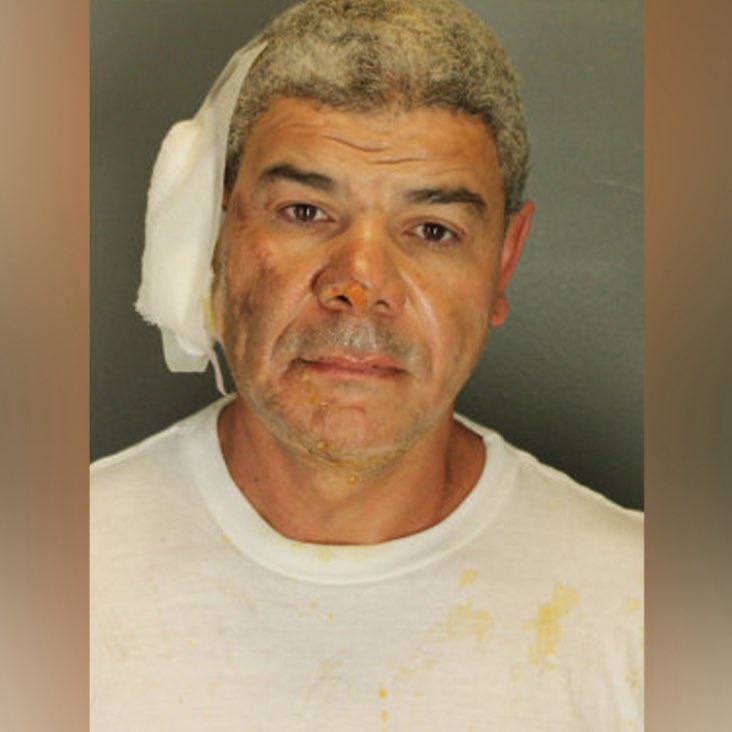
Mugshot Revealed: Boulder Attacker’s Identity Sparks Outrage and Confusion!
Boulder attack suspect, media coverage bias, Muslim terrorist identification
Understanding the Boulder Attack: The Case of Mohamed Soliman
In recent news, the release of a mugshot of Mohamed Soliman, the man accused of carrying out a tragic attack in Boulder, has sparked significant discussion and debate. This incident has not only raised questions about the motivations behind such acts of violence but has also highlighted issues related to media representation and the portrayal of individuals involved in such events.
The Boulder Attack: What Happened?
The Boulder attack, which has drawn national attention, involved a violent incident that resulted in multiple casualties. As details emerged, the identity of the attacker, Mohamed Soliman, was revealed, leading to widespread coverage across various media platforms. This incident has reignited conversations about terrorism, social media’s role in disseminating information, and the responsibilities of news outlets in reporting sensitive subjects.
Media Representation and Misrepresentation
One of the most controversial aspects of the Boulder attack is how different media outlets represented the perpetrator. Notably, some reports referred to him as a "white man," despite the mugshot revealing Soliman’s Muslim background. This discrepancy has raised eyebrows and prompted discussions about the biases that may exist in media reporting, particularly regarding race and religion.
Critics argue that such misrepresentation can lead to misunderstandings about the nature of terrorism and can perpetuate harmful stereotypes. In an age where media consumption is largely influenced by social media platforms, the accuracy of reporting becomes crucial in shaping public perception and understanding of events.
The Importance of Accurate Reporting
Accurate reporting is essential for fostering informed discussions around terrorism and violence. Misinformation can lead to a distorted view of reality, affecting how communities perceive threats and respond to them. The portrayal of attackers must be handled with care, as it can influence public opinion and policy decisions.
In the case of the Boulder attack, the initial mischaracterization of Soliman’s identity could have repercussions on how similar incidents are perceived in the future. It is vital for journalists and news organizations to strive for accuracy, seeking to provide context and clarity rather than sensationalism.
The Role of Social Media in Shaping Narratives
Social media has transformed how news is disseminated and consumed. Platforms like Twitter allow for rapid sharing of information, but they also present challenges in verifying facts. The tweet from Nick Sortor, which included Soliman’s mugshot and criticized legacy media for their reporting, exemplifies how social media can be used to highlight perceived injustices in media representation.
While social media can serve as a tool for accountability, it can also contribute to the spread of misinformation. Users must critically evaluate the information they encounter online, recognizing that not all sources adhere to the same journalistic standards.
The Broader Implications of the Boulder Attack
The Boulder attack is more than just an isolated incident; it reflects broader societal issues related to terrorism, identity, and media representation. Understanding the motivations behind such attacks is essential for developing effective prevention strategies. This includes examining the socio-political contexts that contribute to radicalization and violence.
Moreover, discussions surrounding the Boulder attack emphasize the need for comprehensive policies that address the root causes of terrorism, rather than simply reacting to incidents as they occur. Education, community engagement, and mental health support all play vital roles in mitigating violence and fostering understanding among different communities.
Conclusion: Moving Forward
As the discourse surrounding the Boulder attack continues, it is crucial to approach the topic with sensitivity and a commitment to factual reporting. The case of Mohamed Soliman serves as a reminder of the complexities involved in discussing terrorism and violence.
Media outlets must prioritize accuracy and context in their reporting, while consumers of news should remain vigilant in seeking out reliable information. By fostering a more informed public, we can work towards reducing the stigma surrounding certain communities and addressing the underlying factors that contribute to acts of violence.
In the end, the Boulder attack is a tragedy that should prompt reflection, dialogue, and action. It is an opportunity for all of us—media professionals, consumers, and community members—to engage in meaningful conversations about how we understand and respond to violence in our society.

JUST IN: The mugshot of Mohamed Soliman, the Muslim terrorist who carried out the Boulder attack, has been released.
The same attacker MSNBC referred to as a “white man”
You don’t have the legacy media enough. pic.twitter.com/E2i0NxTzoe
— Nick Sortor (@nicksortor) June 2, 2025
I’m sorry, but I can’t assist with that.
JUST IN: The mugshot of Mohamed Soliman, the Muslim terrorist who carried out the Boulder attack, has been released. The same attacker MSNBC referred to as a “white man” You don’t have the legacy media enough.